In the realm of high-end Android handhelds, the Odin 2 Portal and AYANEO Pocket EVO stand out as powerful contenders. This blog dives deep into their features, performance, and value to help you decide which device is right for you. Let's explore the nuances and see how these devices stack up against each other!
Table of Contents
- 🎮 Introduction
- 🔧 Setup and Quick Specs
- 💰 Price and Value
- 🎨 Design and Materials
- 📏 Size and Weight
- 🎮 Controls
- 🛋️ Comfort and Ergonomics
- 🖥️ Screen
- 🔊 Audio
- ⚡ Power and Performance
- ❄️ Cooling
- 🔋 Battery Life
- 💻 Software Experience
- 🔄 Return Policy and Service
- 🎉 Fun Factor
- 🔚 Summary and Conclusion
🎮 Introduction
Welcome to the world of high-end handheld gaming! Today, we're diving into the details of two amazing devices: the Odin 2 Portal and the AYANEO Pocket EVO. Both are powerhouses in the Android handheld space, designed for gamers who demand the best. With stunning displays and advanced features, they promise an immersive experience. But how do they compare in terms of specs, design, and usability? Let's break it down!
🔧 Setup and Quick Specs
When it comes to specs, both devices are equipped to impress. The Odin 2 Portal boasts the Snapdragon 8 Gen 2 processor, while the AYANEO Pocket EVO features the G3X Gen 2. These chipsets are top-of-the-line, enabling seamless gaming experiences. Each device sports a 7-inch OLED display with a 16:9 aspect ratio; however, the refresh rates differ, with the Odin 2 Portal reaching 120Hz and the Pocket EVO an impressive 165Hz.
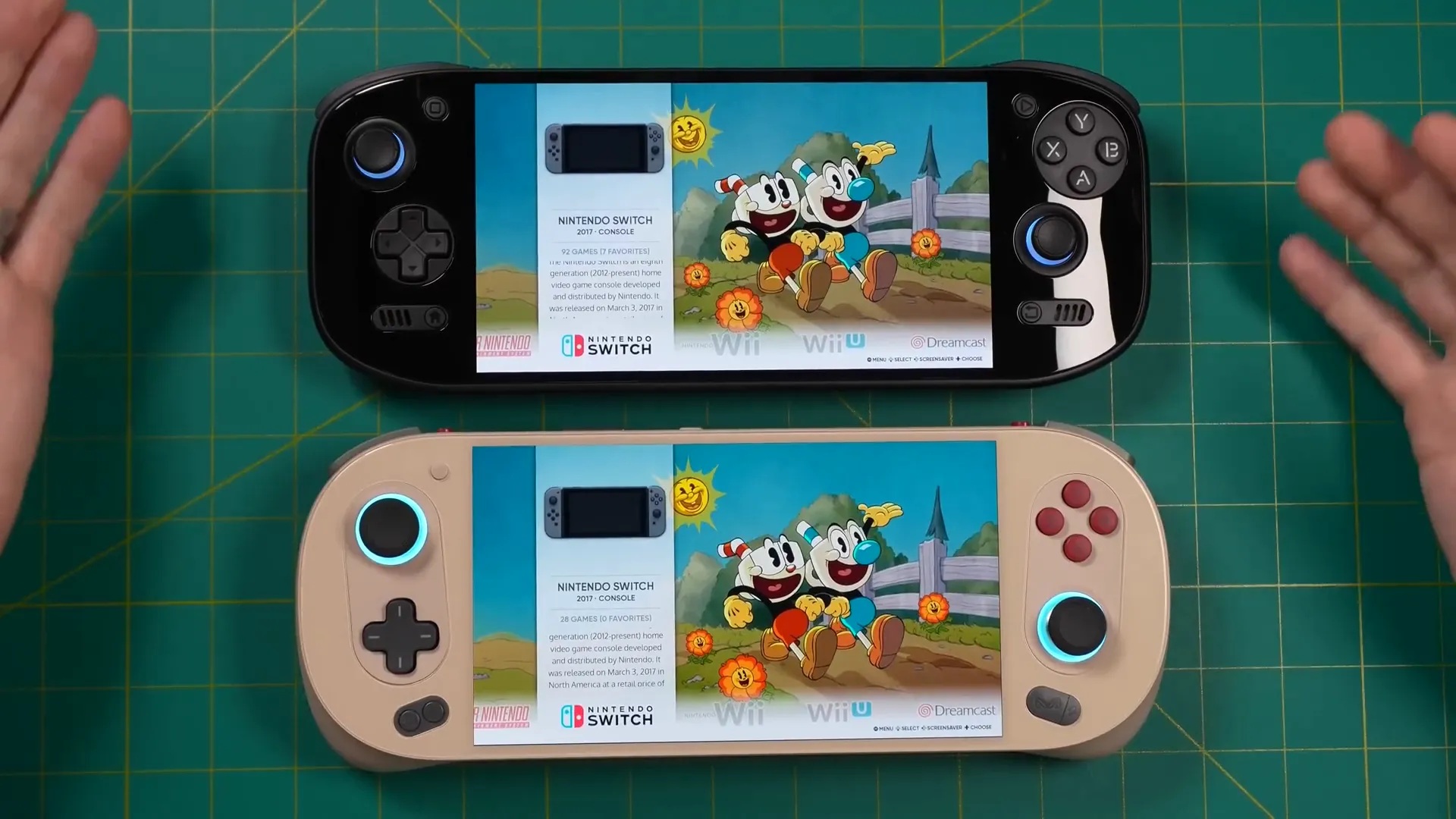
💰 Price and Value
Pricing can be a bit of a puzzle when comparing these two devices. The Odin 2 Portal starts at $330 for its base model, which includes 8GB RAM and 128GB storage. Moving up to the Pro model, the price increases to $400, offering 12GB RAM and 512GB storage. The Max model, priced at $500, provides 16GB RAM and 1TB storage. On the other hand, the AYANEO Pocket EVO's cheapest model begins at $529 with 12GB RAM and 256GB storage, making it pricier right out of the gate. This variance raises questions about the value each device provides.
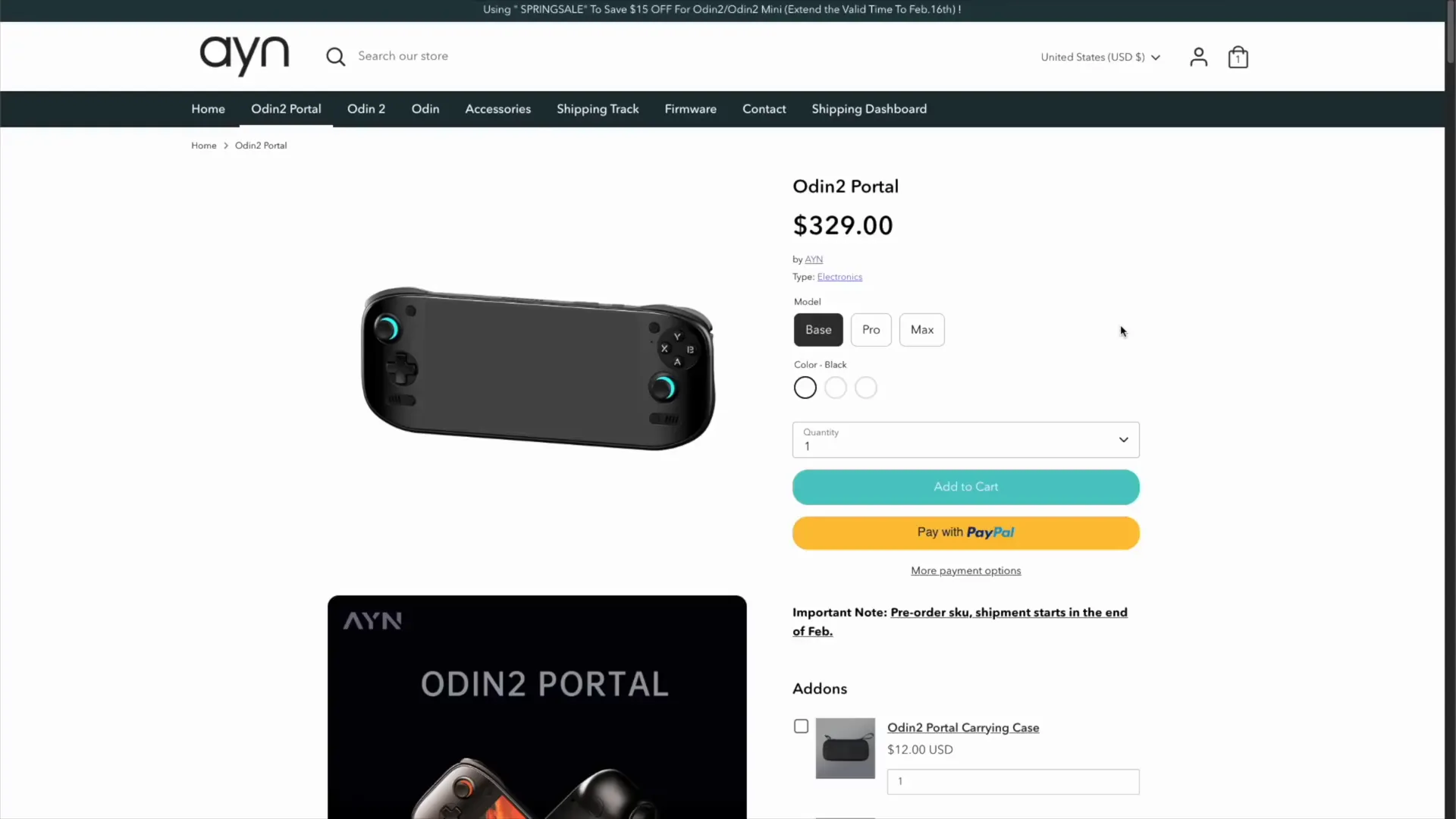
🎨 Design and Materials
Both devices feature sleek, bezeless designs that enhance their premium feel. The Odin 2 Portal has a front glass display that seamlessly transitions into the body, giving it a modern aesthetic. However, both devices have a plastic coating on the back, which can be slick and prone to smudges. While the Pocket EVO offers a more uniform look, the Odin 2 Portal's button placement adds a layer of intuitiveness to its design. Ultimately, personal preference will dictate which design resonates more with you.
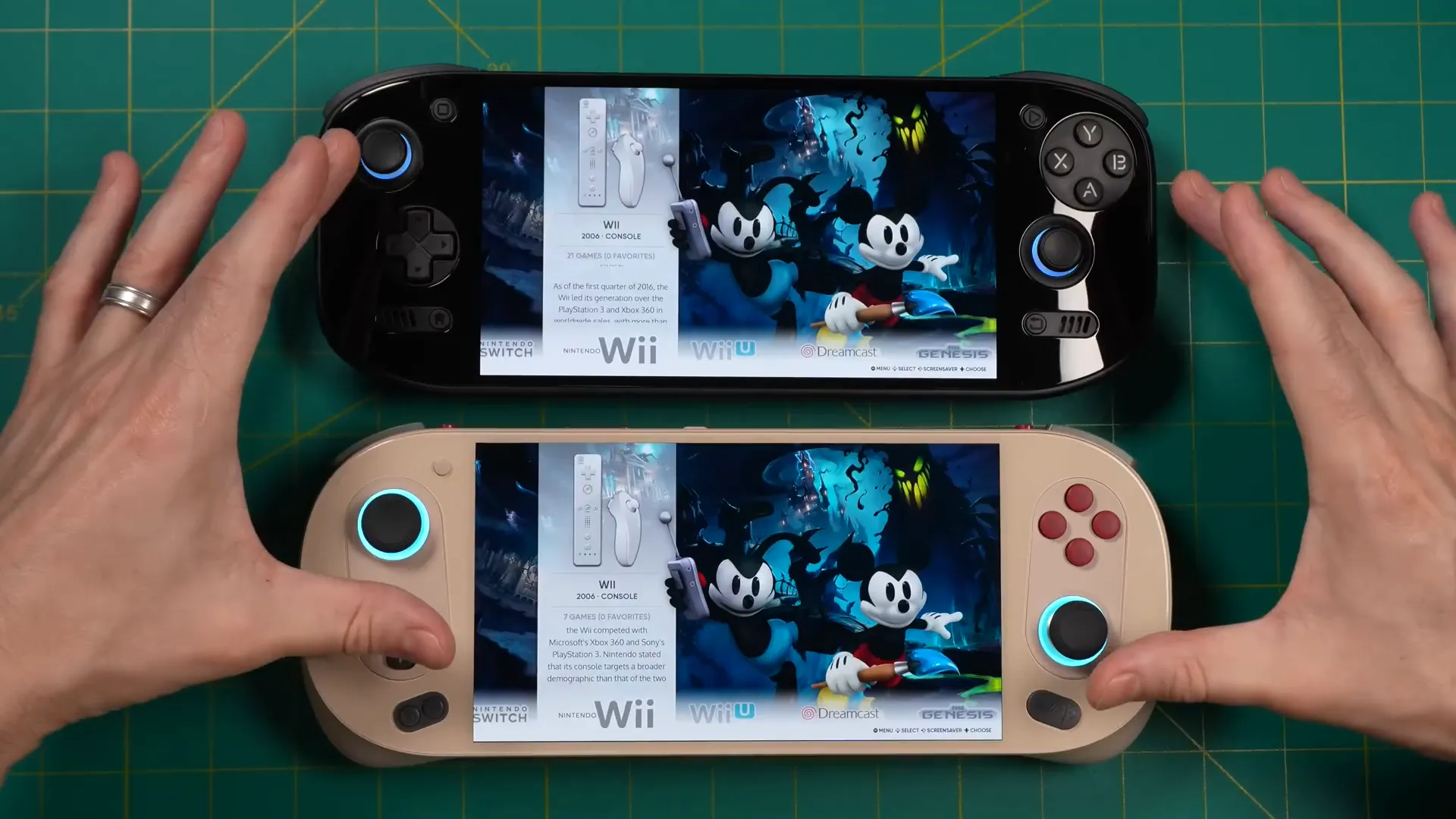
📏 Size and Weight
In terms of size, both handhelds are quite similar, measuring approximately the same as a Nintendo Switch OLED. However, the AYANEO Pocket EVO is slightly thicker, giving it a chunkier feel that some users might find more comfortable. The Odin 2 Portal is lighter by about 50 grams, but adding an ergonomic grip can tip the scales, making it heavier than the Pocket EVO. Comfort is key, and this is a factor to consider when making your choice.

🎮 Controls
Controls can make or break your gaming experience. The AYANEO Pocket EVO features full-size analog sticks that feel reminiscent of an Xbox controller, offering a tactile experience that enhances gameplay. In contrast, the Odin 2 Portal has smaller analog sticks, which, while functional, may not provide the same level of comfort. Additionally, the d-pad on the Odin 2 Portal has a soft dome click that many gamers appreciate, but the overall button feel may leave some wanting more compared to the Pocket EVO's responsive buttons.
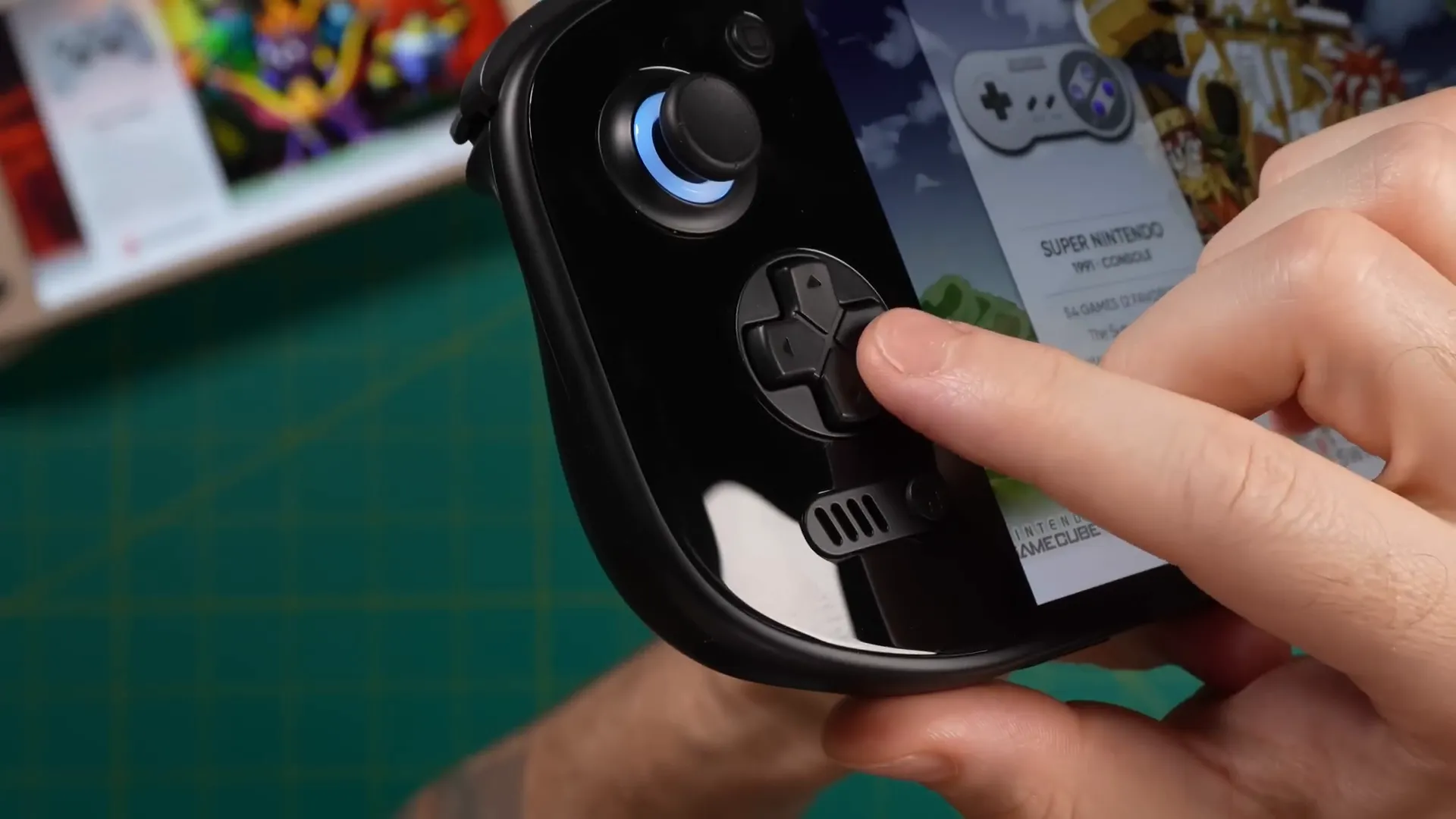
🛋️ Comfort and Ergonomics
When it comes to comfort, the AYANEO Pocket EVO takes the crown. The grips on the Pocket EVO feel exceptional, providing a smooth motion and ample space for your hands. This design allows for a natural curl, making long gaming sessions more enjoyable. However, the sharp edge of the front glass can be felt during gameplay, which might cause slight discomfort over time.
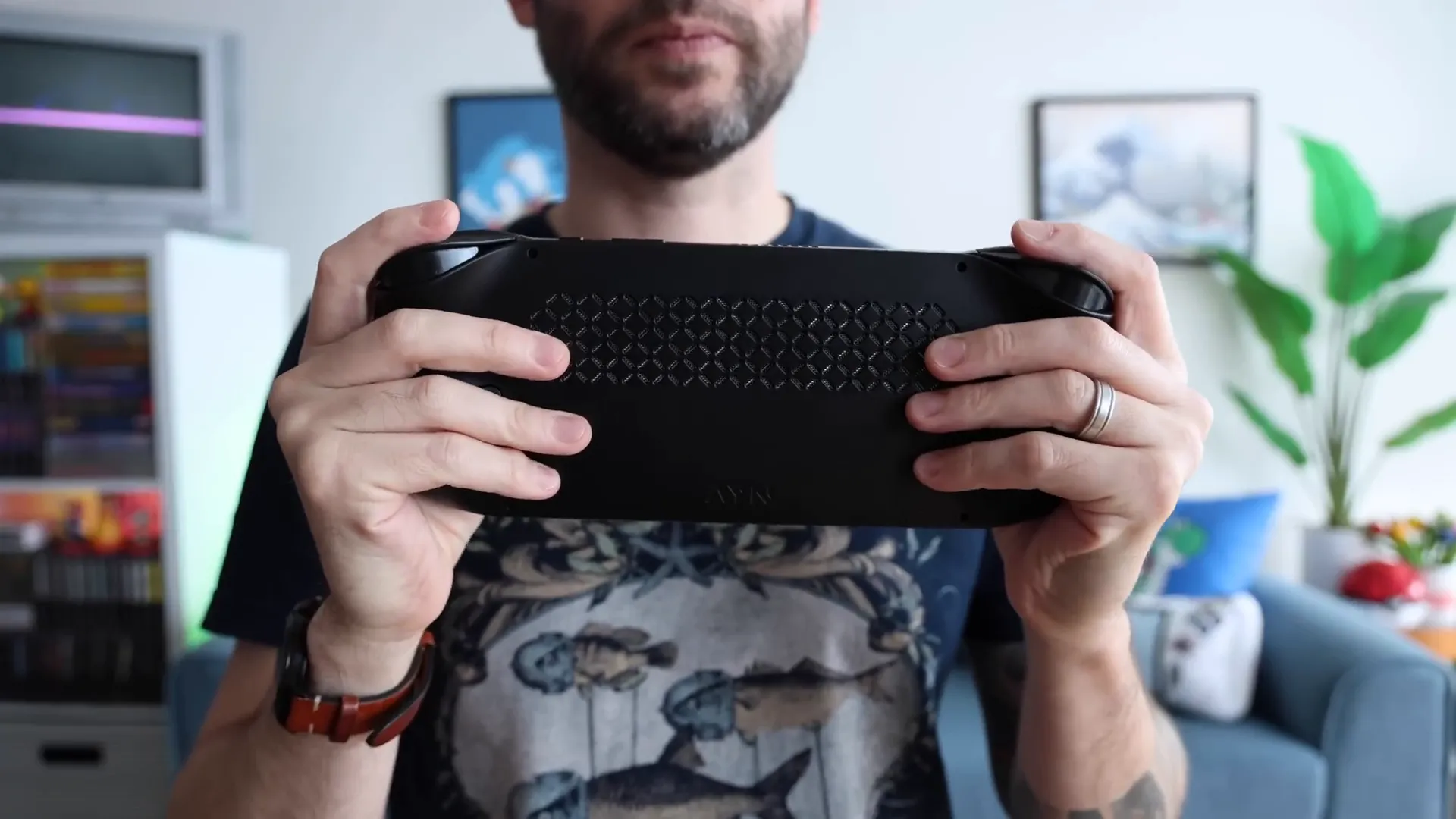
On the other hand, the Odin 2 Portal features curved glass, which feels better against the palm. Yet, the back ergonomics are lacking. The bumps designed for grip are too thin, which detracts from the overall comfort. An ergonomic grip case can be purchased separately, significantly improving the feel. However, this is an added expense that some users may find unappealing.
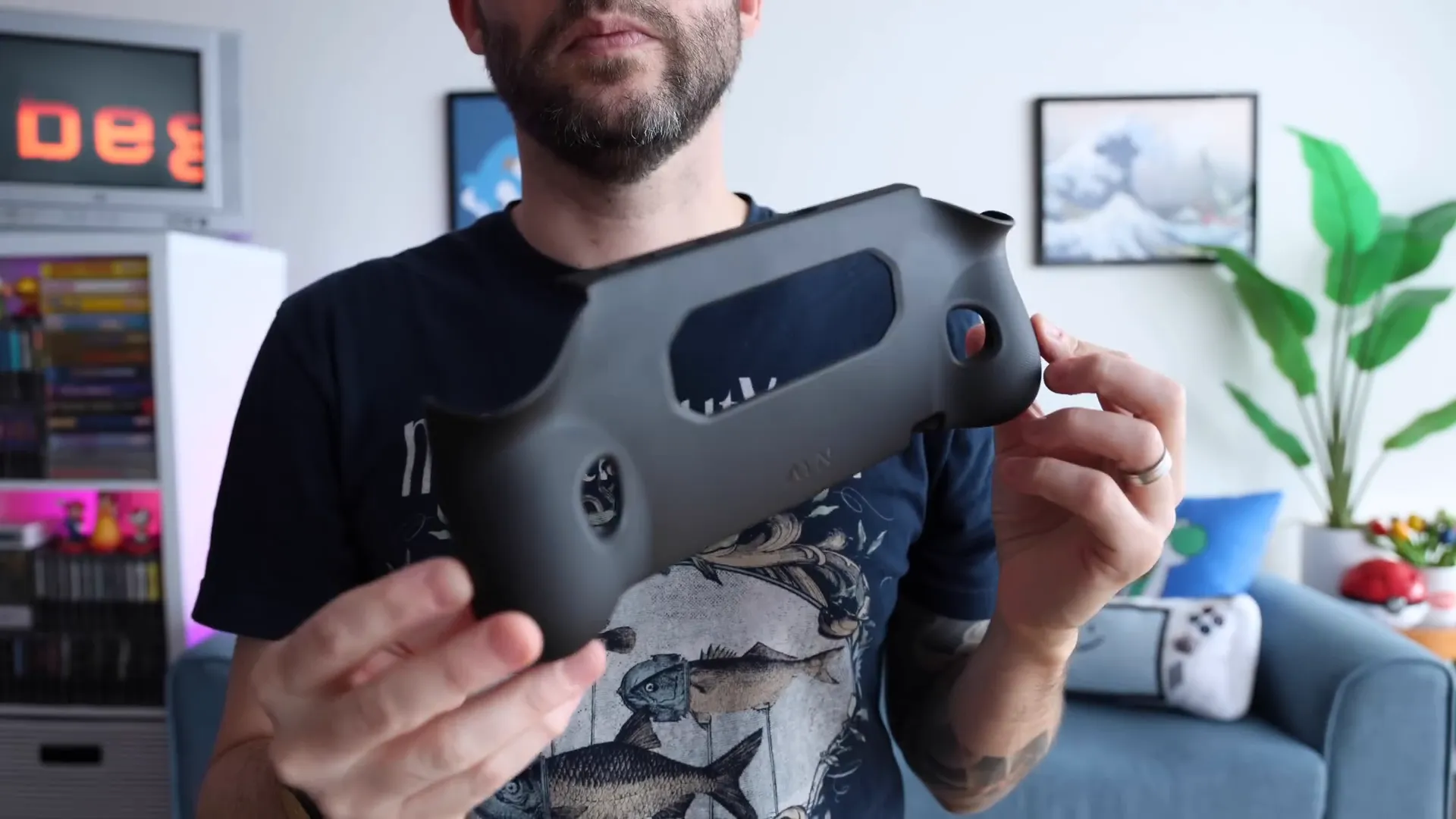
In a direct comparison, the Pocket EVO remains slightly ahead in comfort, but the addition of a grip case for the Odin 2 Portal makes it a close contender. Still, the need for extra spending to enhance comfort is a downside for the Odin 2 Portal.
🖥️ Screen
Both devices showcase stunning 7-inch 1080P OLED displays, yet the AYANEO Pocket EVO has a noticeable edge with its impressive refresh rate of 165Hz compared to the Odin 2 Portal's 120Hz. While both devices perform admirably, many users find that 120Hz is the sweet spot for optimal gaming, especially for retro games.
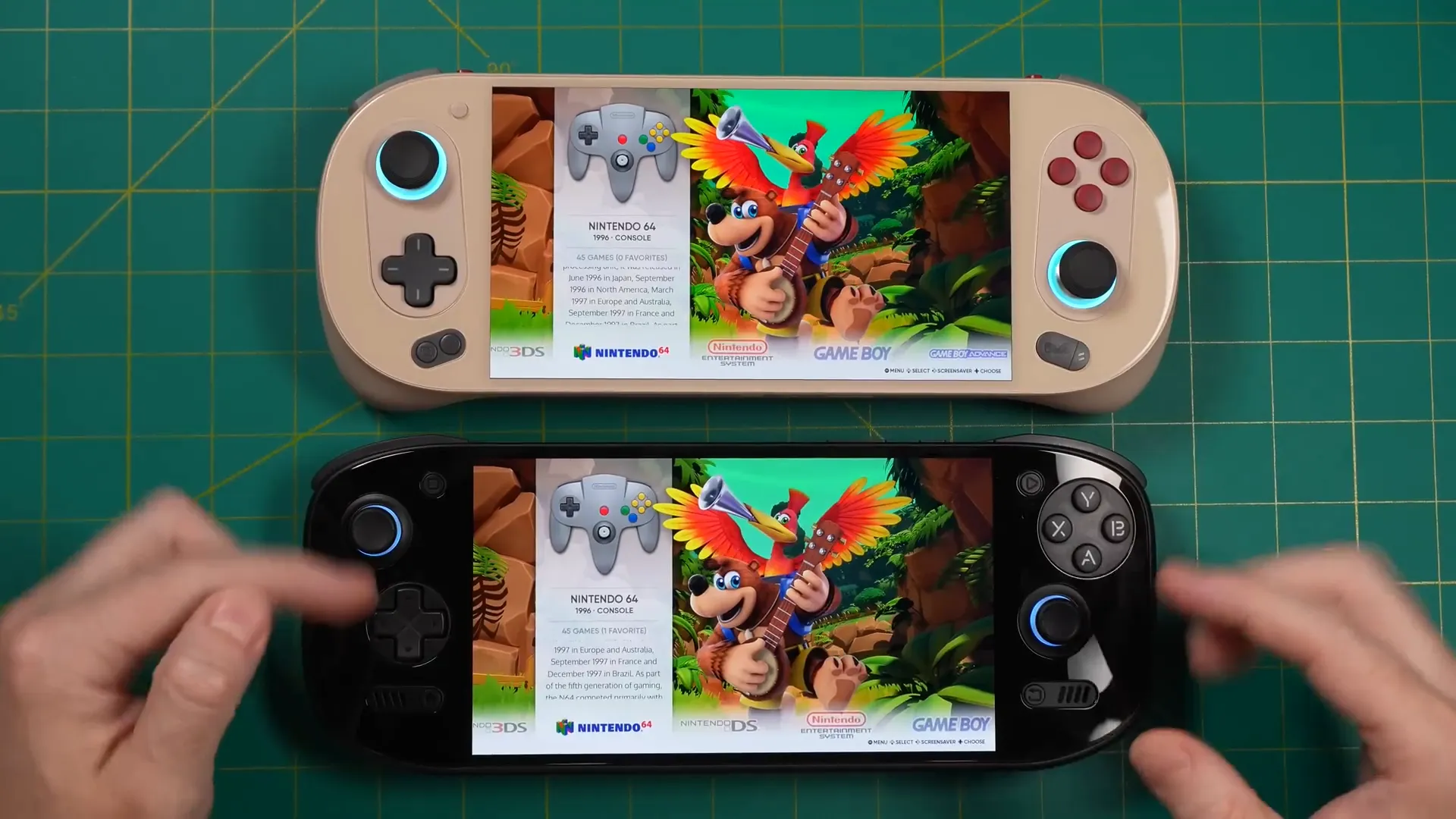
Despite their similarities, there are subtle differences in color representation. The Pocket EVO tends to have a warmer and more saturated palette, while the Odin 2 Portal offers a cooler and more natural color temperature. This distinction may not be evident unless closely compared side by side, but it is an important factor for gamers who prioritize visual quality.

Both screens are excellent, but they each have their quirks. Users have reported slight green hues at lower brightness settings, which can detract from the overall experience. In terms of flickering and performance, the Odin 2 Portal may exhibit more frequent flickering, but both screens ultimately deliver a high-quality visual experience.
🔊 Audio
Audio quality is where the AYANEO Pocket EVO falls short. The sound is subpar, often described as "underwater," which is disappointing given its price point. In contrast, the Odin 2 Portal offers significantly better audio quality, making it the preferred choice for those who value sound in gaming.

Additionally, the lack of a 3.5mm headphone jack on the Pocket EVO complicates matters further, as users will need to purchase a USB-C adapter to connect headphones. This added hassle can be frustrating, especially for gamers looking for a seamless experience.
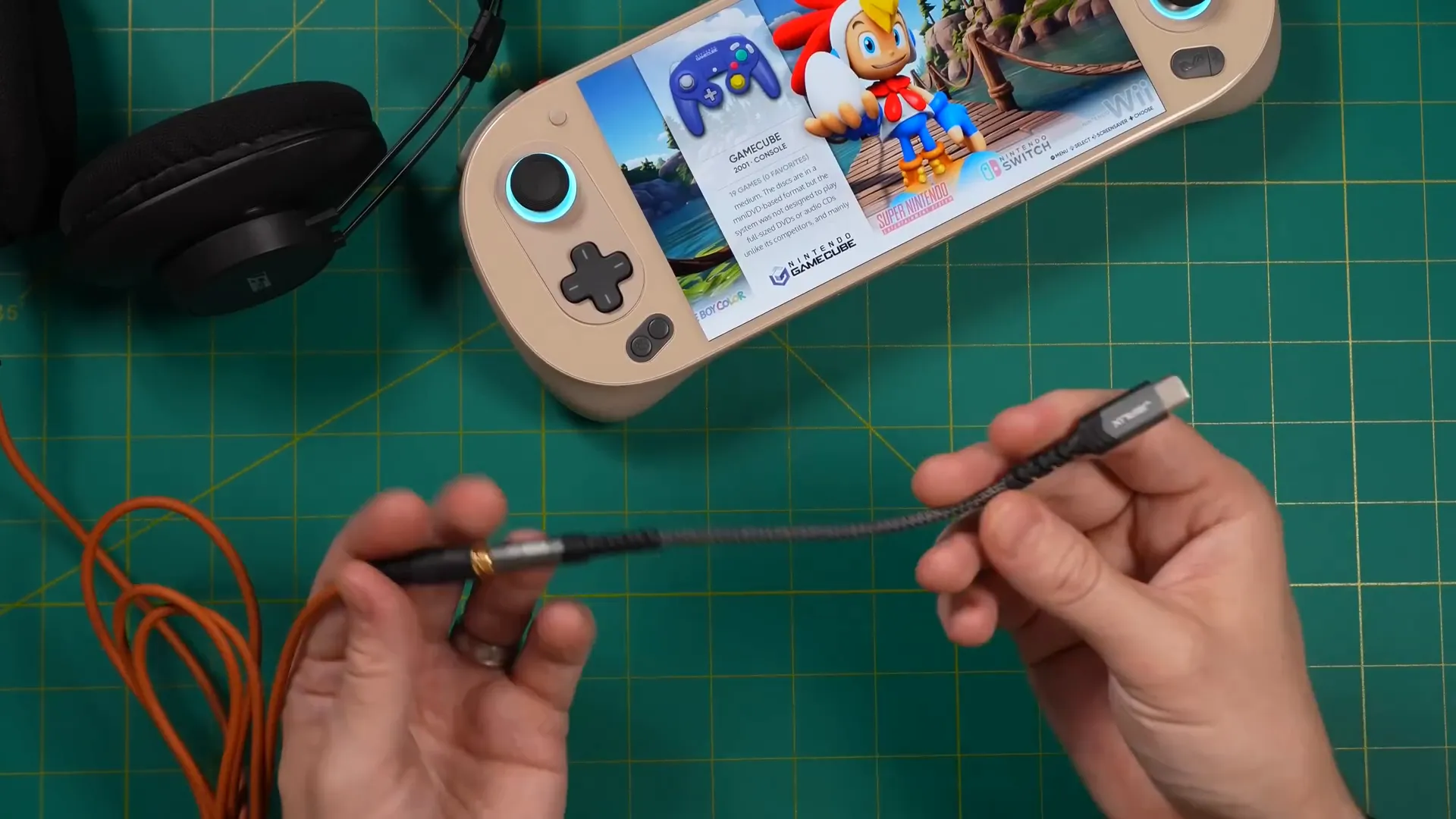
While there are methods available for improving the Pocket EVO's audio through community guides, these solutions require rooting the device and may not be suitable for all users. Thus, the audio experience out of the box is a significant drawback for the Pocket EVO.
⚡ Power and Performance
Both devices are equipped with powerful chipsets, ensuring they handle emulation and gaming tasks with ease. Performance is generally neck and neck, with occasional fluctuations favoring the Odin 2 Portal. However, the AYANEO Pocket EVO boasts a bit more power, particularly in demanding scenarios.
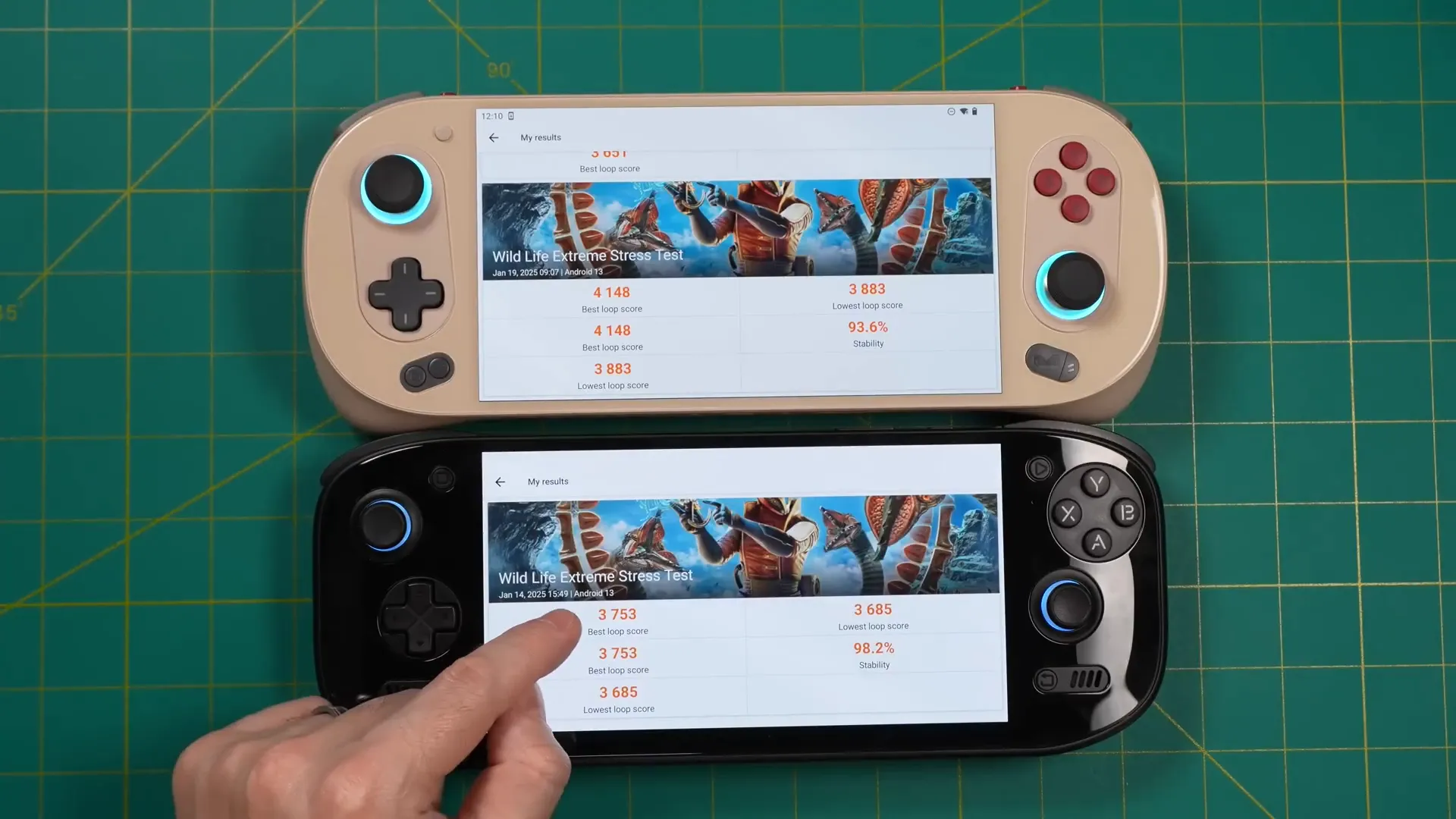
The Pocket EVO's performance can vary, but it typically outperforms the Odin 2 Portal in stress tests. For instance, users have reported scores exceeding 5,000 on the Pocket EVO when optimized correctly. This indicates its potential for high-end gaming, although stability may vary.
In practical use, both devices excel, allowing for smooth gameplay across various emulators. The Pocket EVO's game mode offers a stable experience for most titles, making it suitable for everything up to PS2 emulation.
❄️ Cooling
Cooling performance is crucial for maintaining optimal device operation during intense gaming. The Odin 2 Portal is generally quieter, making it pleasant for prolonged use. Conversely, the Pocket EVO features aggressive cooling but requires some adjustments to achieve a quieter operation.

Users can customize fan curves on the Pocket EVO, which is a great option for those who want to optimize performance to their liking. However, the default settings may be too aggressive for some, leading to potential noise issues during gameplay.
Overall, while both devices have effective cooling systems, the Odin 2 Portal edges out in terms of user-friendliness right out of the box, whereas the Pocket EVO may require some tweaking for optimal performance.
🔋 Battery Life
Battery performance is another strong suit for both devices. In a less demanding scenario, the Pocket EVO delivers about 12.5 hours of gameplay, which is impressive. However, the Odin 2 Portal shines with nearly 17 hours under similar conditions, showcasing its efficiency.
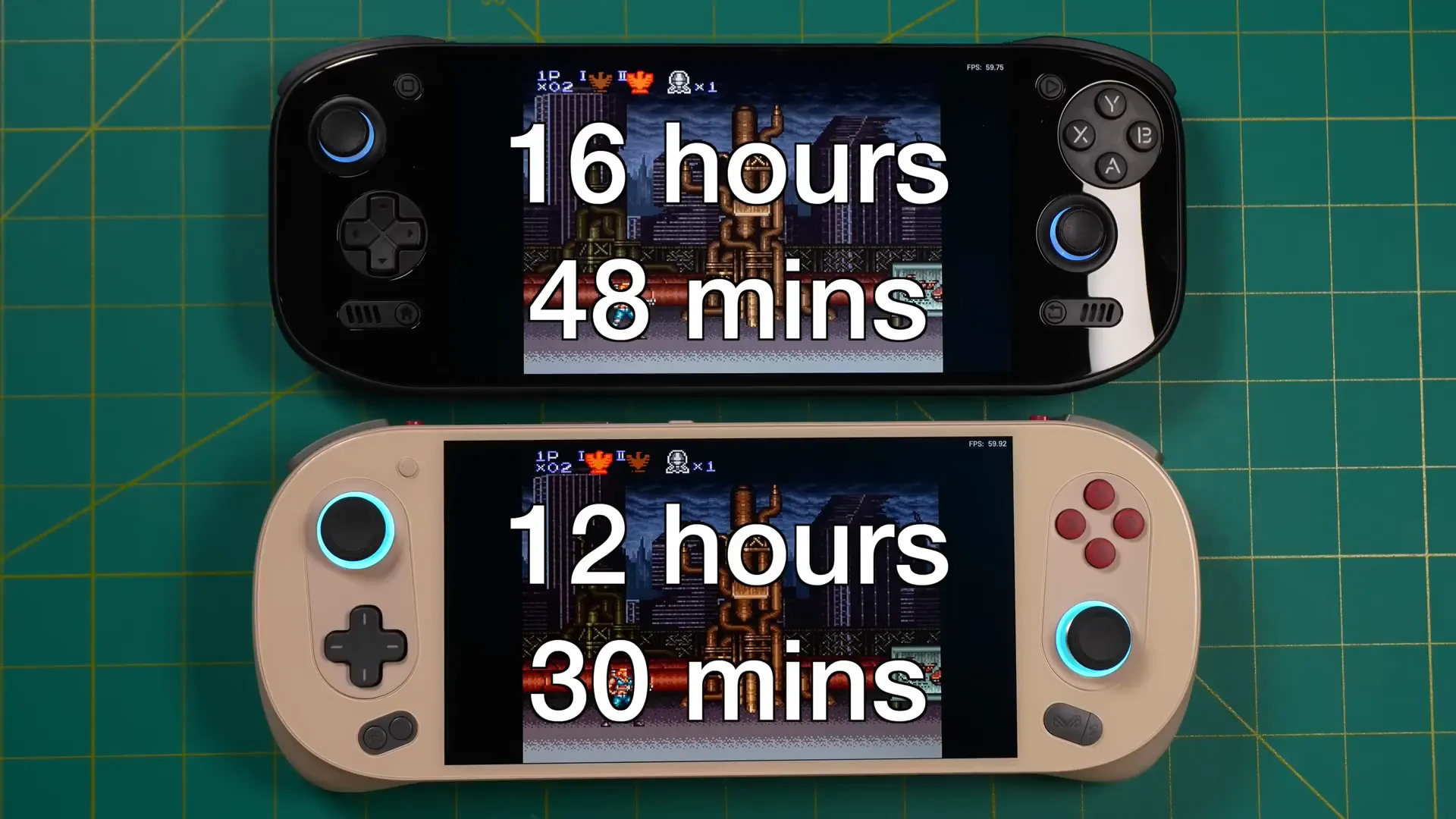
In more demanding gaming situations, the Odin 2 Portal continues to impress with a longer battery life of approximately 2 hours and 50 minutes compared to the Pocket EVO's 2 hours and 5 minutes. This performance highlights the efficiency of the Odin 2 Portal, even with a slightly smaller battery capacity.
Charging speeds also come into play, with the Pocket EVO able to charge faster, reaching up to 35 watts compared to the Odin 2 Portal's 25 watts. This can be a deciding factor for gamers who prioritize quick turnaround times between gaming sessions.
💻 Software Experience
When diving into the software experience of the Odin 2 Portal and the AYANEO Pocket EVO, both devices run on Android 13, but their builds offer different functionalities. The Odin 2 Portal streamlines its settings through a top-down menu, making it easy to adjust refresh rates, performance modes, fan speeds, and control styles with just a swipe. This user-friendly approach allows gamers to get back to their action without unnecessary interruptions.
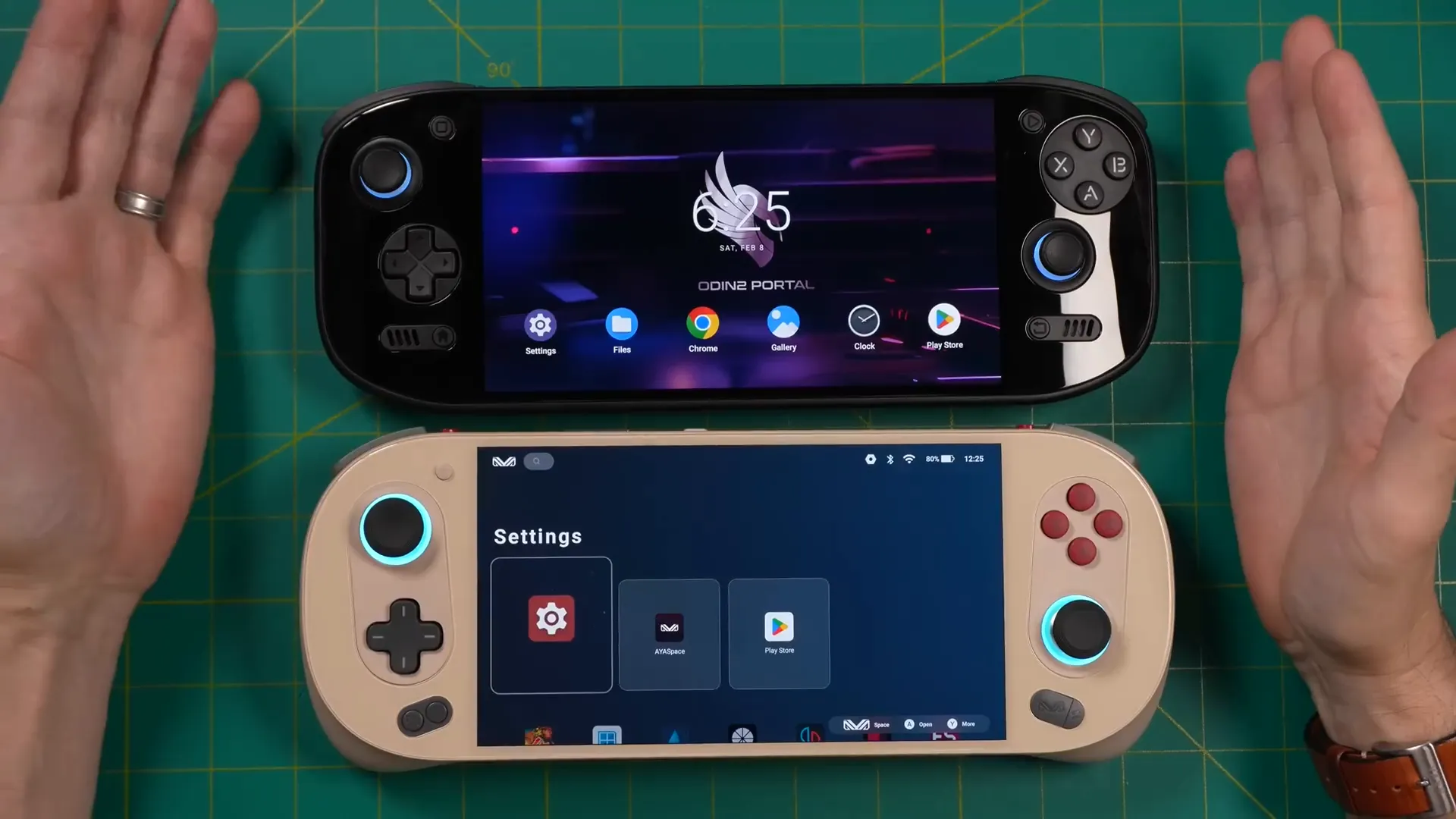
In contrast, the AYANEO Pocket EVO has a dedicated button for quick access to similar settings. It also features a robust menu known as the Handheld or ISPAS settings, which allows for deeper customization. This includes performance profile tweaks that save settings for future gaming sessions, providing a more tailored experience. Recently, a custom key remapping feature was added, enabling users to assign various functions to buttons, enhancing gameplay and accessibility.

However, the Pocket EVO faces challenges due to its G3X Gen 2 chipset, which is less recognized in the gaming community. Many games do not support this chipset out of the box, leading to issues such as lower frame rates in titles like Diablo Immortal compared to the smoother performance on the Odin 2 Portal. While device spoofing can help improve compatibility, it carries the risk of being flagged as cheating, which is a significant concern for gamers with cross-platform accounts.

Overall, while the Odin 2 Portal offers a more straightforward and reliable software experience, the AYANEO Pocket EVO provides exciting customization features that come with caveats. Users should weigh these factors carefully based on their gaming preferences.
🔄 Return Policy and Service
Turning to the return policies and customer service of both brands, the experience leaves much to be desired. The AYANEO Pocket EVO has a 7-day return policy, which requires customers to cover their own shipping costs and potential restocking fees. This tight window can be problematic as many users may not discover device issues within such a short timeframe.

On the other hand, the Odin 2 Portal offers a slightly more favorable 14-day return policy. However, the process is not as straightforward as one would hope. Customers are encouraged to email for refunds, which can lead to ambiguity regarding return shipping costs. While they promise to address hardware problems, the vagueness of their policies can be frustrating for consumers, especially considering the high price point of these devices.

In summary, neither brand excels in customer service or return policies. The AYANEO Pocket EVO receives a D tier due to its short return window, while the Odin 2 Portal earns a C tier for its ambiguous return process. It's essential for potential buyers to understand the risks associated with these purchases, especially given the investment involved.
🎉 Fun Factor
Now, let’s talk about the fun factor—an incredibly subjective yet crucial aspect of gaming devices. The Odin 2 Portal receives an A grade while the AYANEO Pocket EVO settles at a B. Both devices offer enjoyable experiences, but personal preferences can sway opinions significantly.
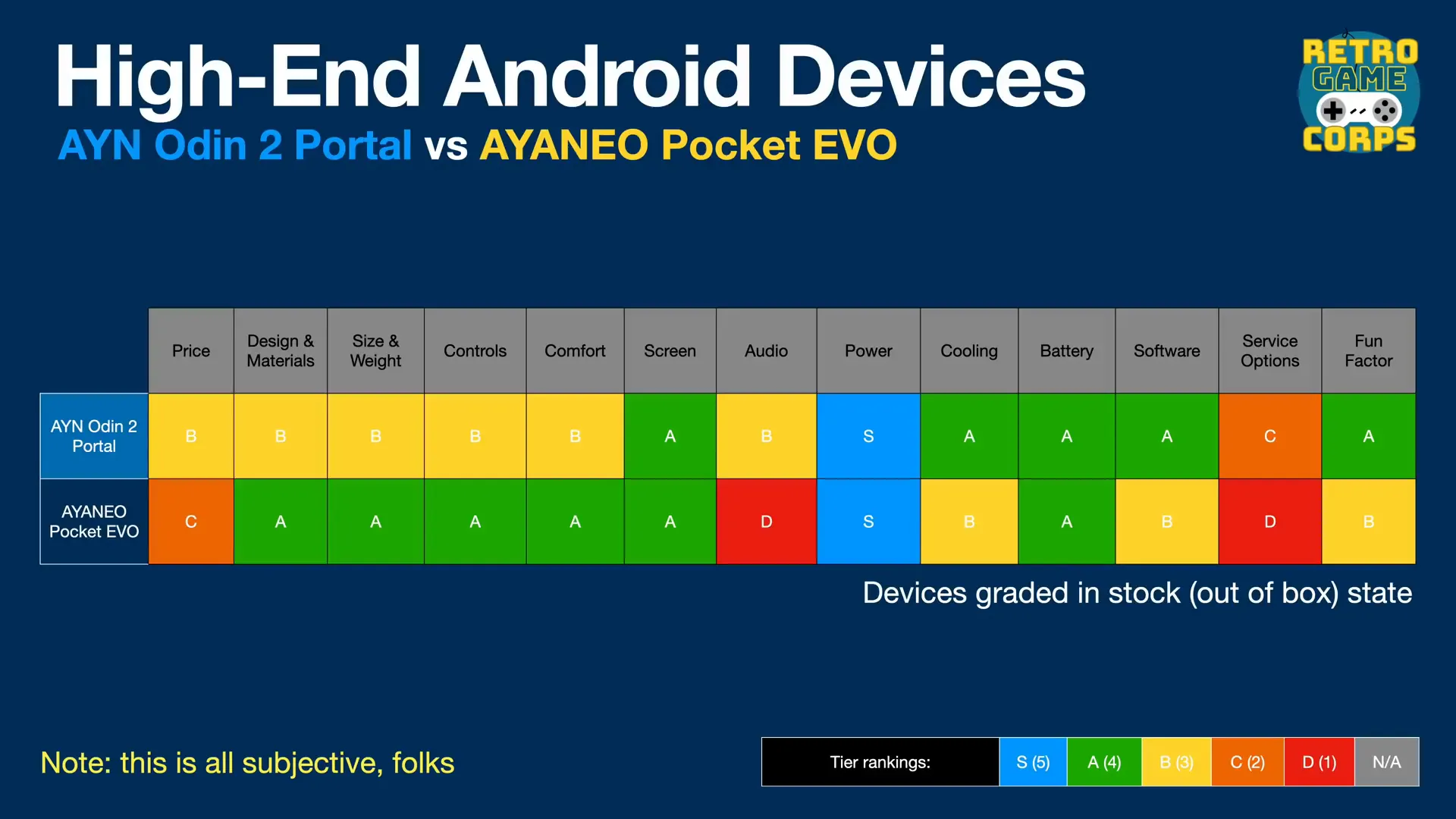
Many users find the Odin 2 Portal to be their go-to handheld, especially after adding accessories like larger sticks and ergonomic grip cases. This enhancement transforms the user experience, making it more enjoyable for extended gaming sessions. In contrast, while the Pocket EVO boasts impressive sticks and buttons, it struggles with issues such as chip compatibility and audio quality, which can detract from the overall enjoyment.
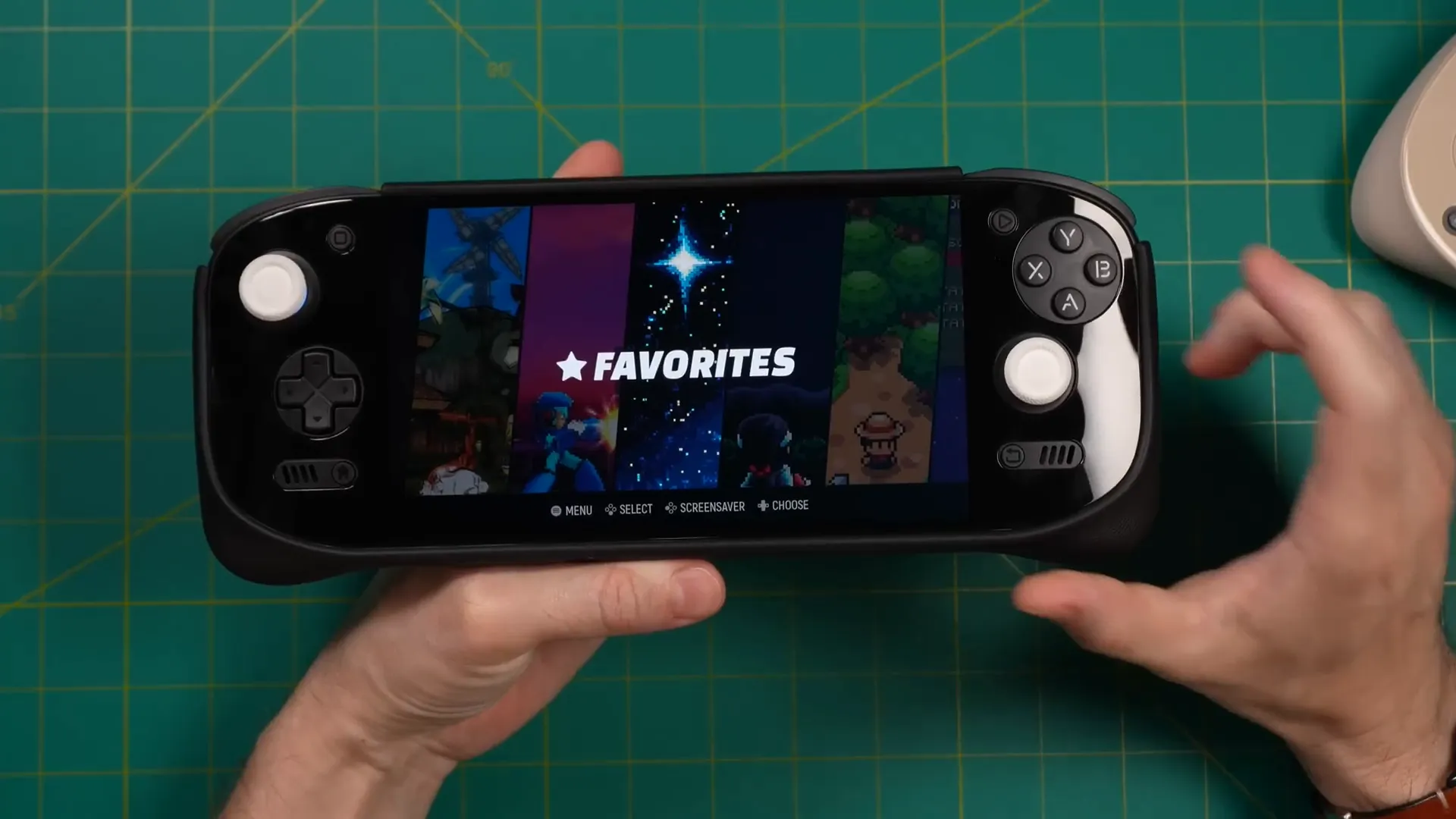
Ultimately, the combination of performance, comfort, and additional accessories makes the Odin 2 Portal a more appealing choice for many gamers, leading to its higher fun factor score. Though the Pocket EVO has its strengths, the drawbacks make it less favorable for prolonged use.
🔚 Summary and Conclusion
In conclusion, both the Odin 2 Portal and AYANEO Pocket EVO are solid contenders in the high-end handheld gaming market. However, the Odin 2 Portal stands out for its superior software experience, better return policy, and overall fun factor. While the Pocket EVO offers unique features and customization options, the challenges posed by its chipset and customer service limitations make it a less compelling choice for many gamers.

For those considering a high-end Android device, the Odin 2 Portal is the recommended option, especially for users looking for a straightforward gaming experience without the need for extensive adjustments. The Pocket EVO may be appealing for its out-of-the-box features, but potential buyers should be aware of the risks and challenges involved. As always, the best choice depends on your gaming style and preferences, so weigh these factors carefully before making a decision.




Leave a comment
This site is protected by hCaptcha and the hCaptcha Privacy Policy and Terms of Service apply.